Different from the Western concept, the dragon is a ferocious animal, the dragon in Vietnamese culture in particular and Eastern culture in general is the head of the four sacred animals "Long, Ky, Quy, Phuong"; the dragon is a noble and sacred animal, representing strength and power.
Dragons appeared in Vietnamese culture very early, possibly since the Bronze Age. The earliest traces of dragons were found on Dong Son bronze objects such as the Ngoc Lu bronze drum and the Hoang Ha bronze drum. On these drums, dragons are depicted in a simple form, with a long, winding body, a horned head, large eyes, and a wide open mouth.
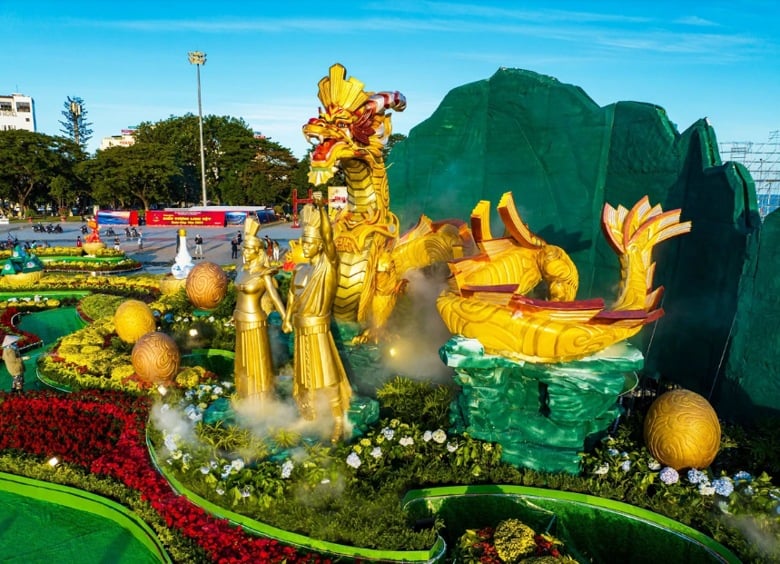
The dragon mascot cluster in Binh Dinh has the theme "Proud of the tradition of Father Dragon - Mother Fairy". Photo: D. Nhan
Every Vietnamese person must have heard the legend of “Dragon and Fairy’s Descendants”, as an explanation of the origin of the nation. In the legend, Lac Long Quan - Au Co gave birth to a sac of one hundred eggs, which hatched into one hundred children, 50 of whom followed their father to the sea, and 50 of whom followed their mother to the forest. The eldest son stayed in Phong Chau to become king, founded Dai Viet, and took the reign name Hung Vuong. Since then, the Vietnamese people have always been proud of their Dragon and Fairy lineage.
During the Hung King period, with the characteristics of rice-growing people living along rivers, the image of a dragon was an animal with a long body and crocodile scales, also known as "Giao Long".
Over the course of history, through different dynasties, the image of the dragon has always been present in cultural and spiritual life, symbolizing the rise and national pride. During the monarchy, the dragon was associated with the image of the emperor, the dragon image was carved on the seal, embroidered on the royal robe and the king's belongings to demonstrate the power of royalty.
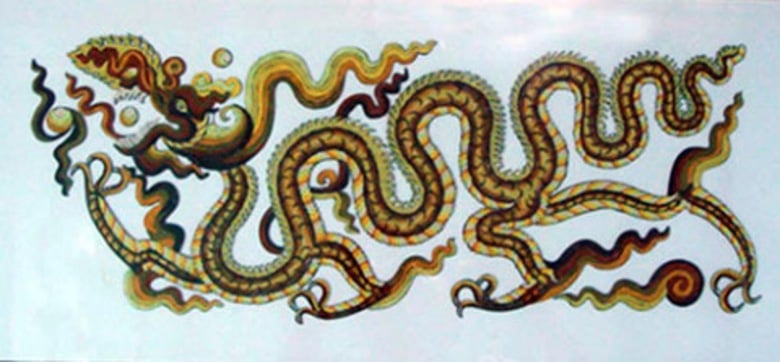
Dragon image of Ly Dynasty. Photo: TL
During the Ly Dynasty, the name of the capital region was called Thang Long, symbolizing the rising spirit. The dragon of the Ly Dynasty was shaped as a long body, with many graceful and soft curves, gradually becoming smaller towards the tail.
During the Tran Dynasty, the dragon image inherited the basic elements of the Ly Dynasty but had changes in details. The dragon's body was more plump and strong, its claws were shorter and larger, and many new poses appeared.
During the Later Le Dynasty, the dragon had a large head and a two-sectioned body symbolizing feudal authority. The dragon's head was no longer split but divided into equal strips, the eyebrows, beard, and calves flared out, and the two whiskers on the mustache were curved. By the mid-18th century, the dragon image had a spiral tail and a thinner body. This style of dragon design is believed to have appeared earliest on royal decrees.
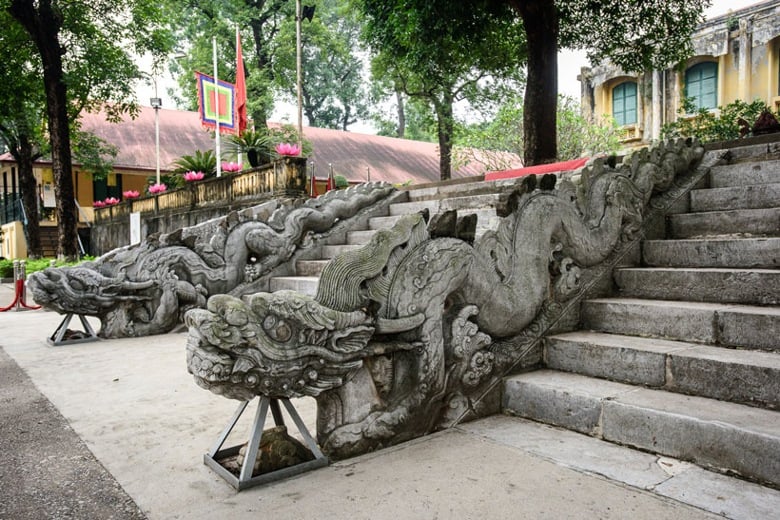
Le Dynasty dragon at the Kinh Thien Palace threshold. Photo: TL
During the Nguyen Dynasty, the dragon image continued to inherit the previous period but changed in shape. The dragon's curvature only curved up to two moderate curves, the dragon's body gradually became smaller and lower towards the tail, the dragon's tail no longer spiraled but stretched out, the dragon's forehead was often concave and slid backwards.
The dragon in particular has sharp, bristling feathers, influenced by the Ming Dynasty dragon. The dragon's body is coiled with fire or cloud patterns, its whiskers curl from under its eyes, and the dragon is shown in many poses hidden in the clouds, or two dragons facing the sun, two dragons facing a chrysanthemum, two dragons facing the longevity character...
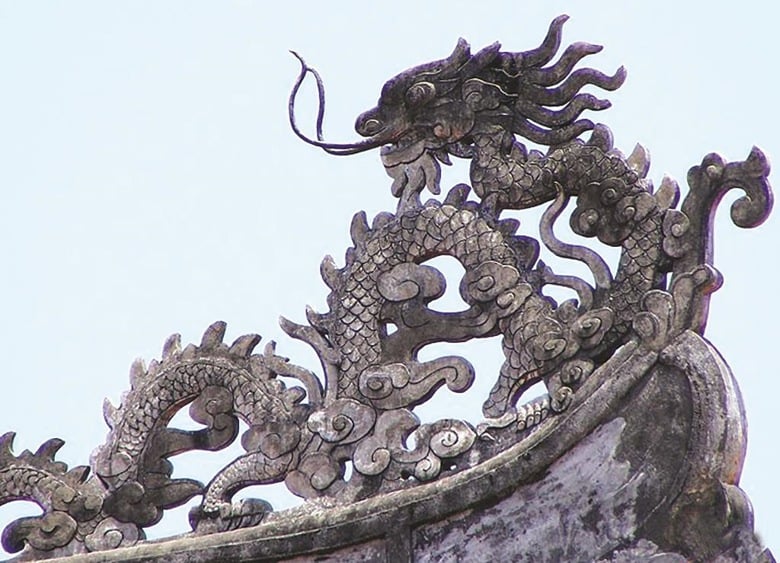
Dragon images are sculpted in communal house and pagoda architecture. Photo: TL
The image of dragons in this period is clearly expressed in architectural decorations, especially the steps of the Hue royal palace and the tombs of the Nguyen Dynasty kings. Through sculpture and shaping, Vietnamese dragons also have their own unique identity. For example, while the image of Chinese dragons is often thorny and fierce, Vietnamese dragons have softer, gentler lines.
In particular, since the second half of the 14th century, the dragon image has gone beyond royal architecture to appear in folk architecture such as sculptures in temples or sculptures on stone and pottery... The dragon image has also been created in a diverse and rich way depending on the concept of each region and material.
In the royal court, the symbol of the emperor, the image of the dragon is always shown in a majestic and powerful posture, but in the folk, the image of the dragon is often shown on ceramics, in a drawing style combined with light and dark areas, with the image of fire and clouds creating a magical shimmer. Besides the way of expressing by carving and drawing, the art of plastering and attaching ceramics to create dragon images is also very popular on the roofs of palaces and temples.
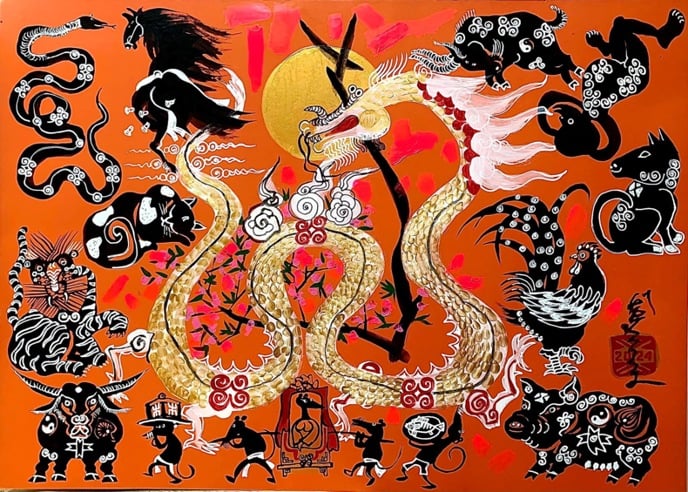
“The Twelve Zodiacs - Dragon Lord”. Painting by Le Tri Dung
In life, the image of the dragon is also richly expressed through cultural activities, such as dragon dances during festivals; children's dragon game; dragons in folk paintings...
In modern times, dragons still hold an important position in Vietnamese culture. Dragons are still considered a symbol of good luck, strength, power, luck, and fortune. The image of dragons is used in many fields of art, culture, and even economics , such as when Vietnam is compared to the Asian Dragon...
The dragon is still the chosen image to decorate architectural works, paintings, sculptures, carvings or embroidered on traditional Ao Dai. At major events, opening and inauguration ceremonies, there are often dragon dance performances, with the meaning of bringing joy, luck and prosperity.
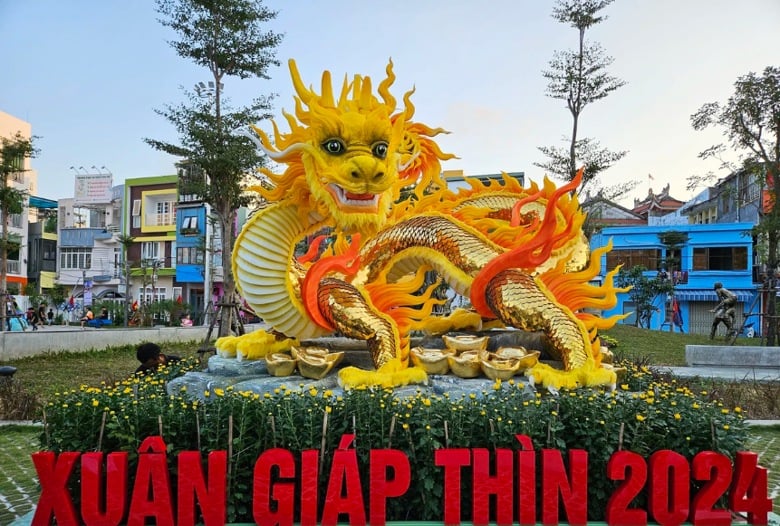
The New Year of the Dragon 2024 is expected to be a lucky year, bringing good things and prosperity. Photo: PLO
Although entering the industrial age, Vietnamese people still do not forget the connection between tradition and modernity, the image of the Vietnamese dragon is still respected. The dragon has always been a symbol of take-off, starting from the dream of King Ly Thai To and the new land of Thang Long. The image of the dragon in the consciousness of the majority of Vietnamese people today and tomorrow is therefore always associated with what is beautiful, developing and eternal.
Vietnamese people believe that the presence of the dragon and the year of the Dragon brings luck, prosperity and success in all fields. The new year of Giap Thin 2024 is expected to be a lucky year, bringing good things and prosperity to each individual, as well as the entire Vietnamese nation.
T.Toan
Source





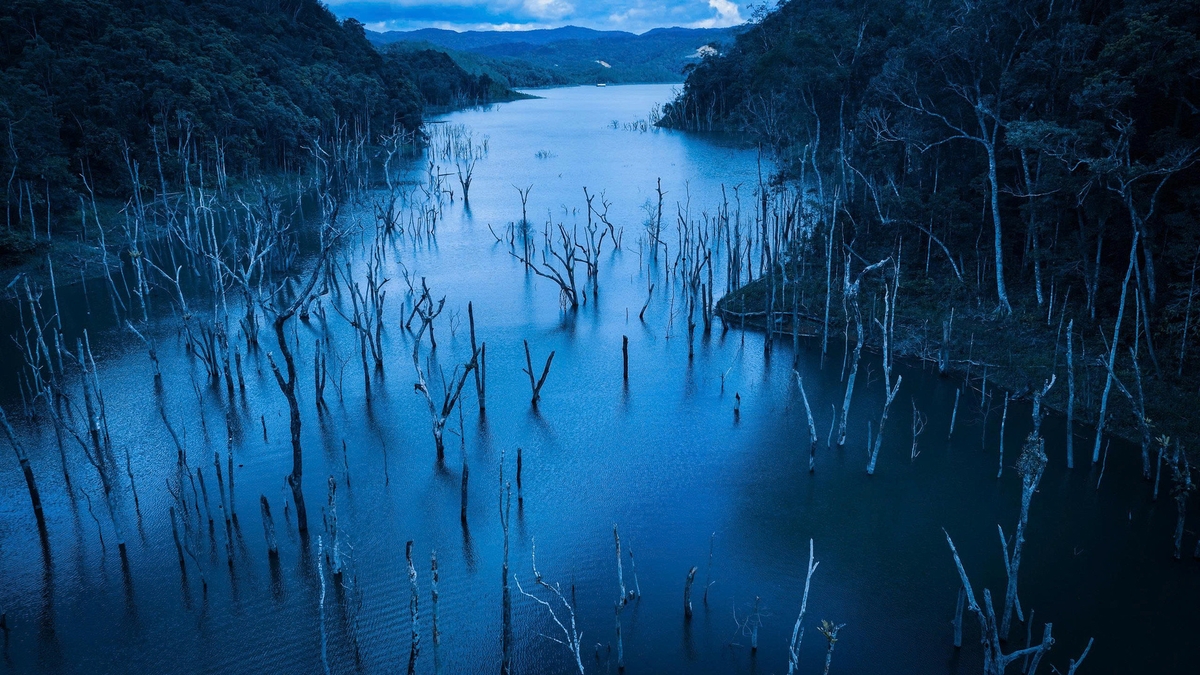
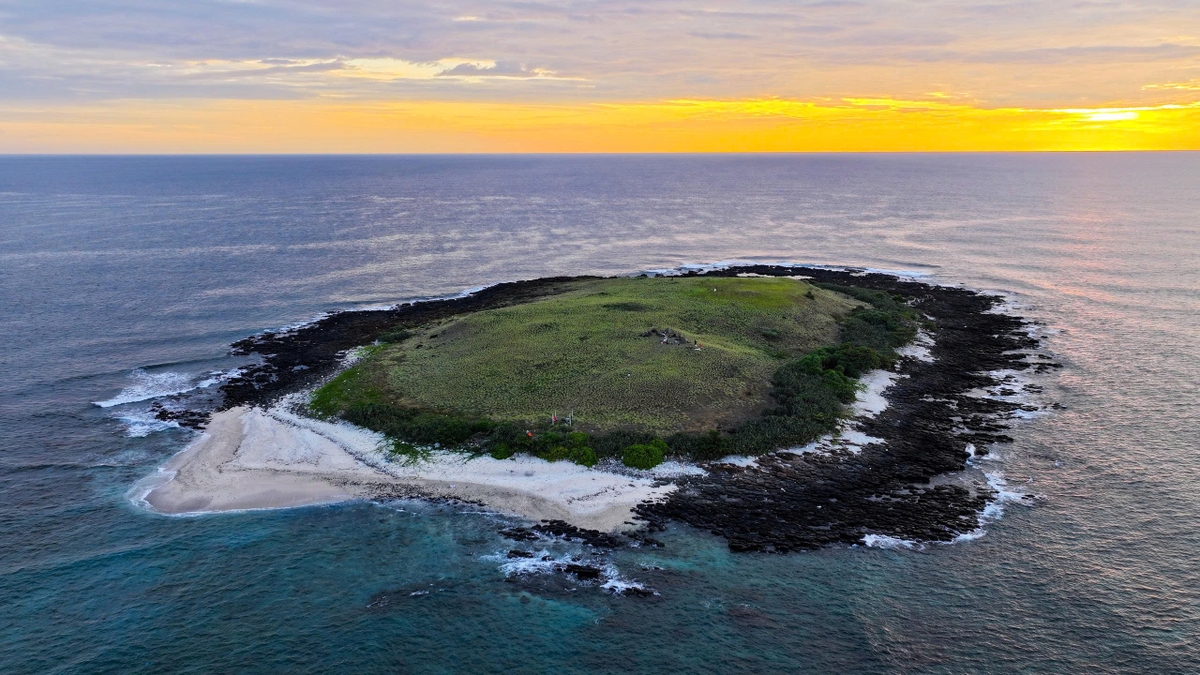

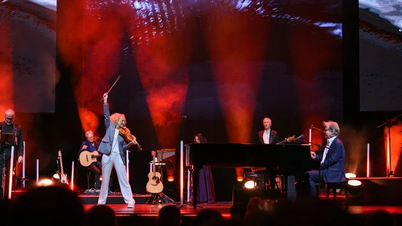

![[Video] Secret Garden and “Whisper of Love”](https://vphoto.vietnam.vn/thumb/402x226/vietnam/resource/IMAGE/2025/10/19/1760847088936_7131939085531-frame-at-0m6s-jpg.webp)


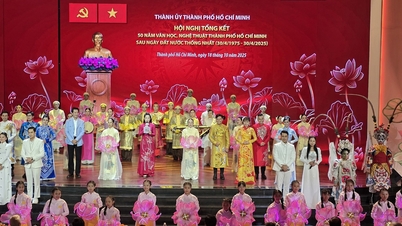

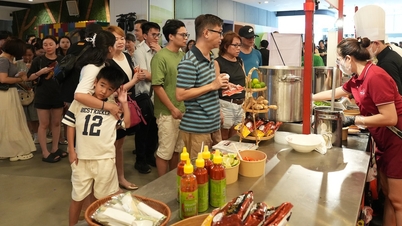
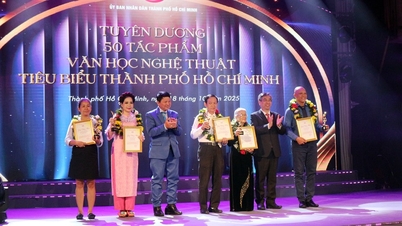







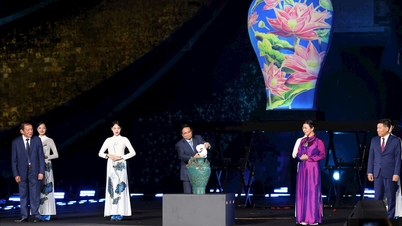



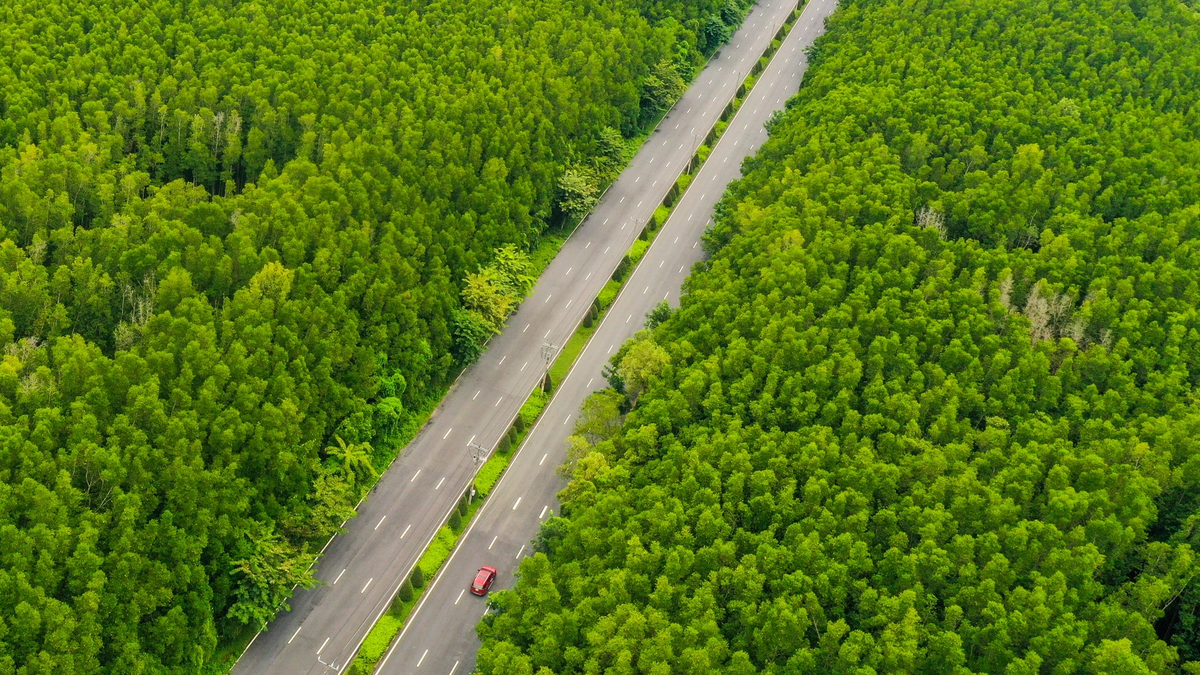


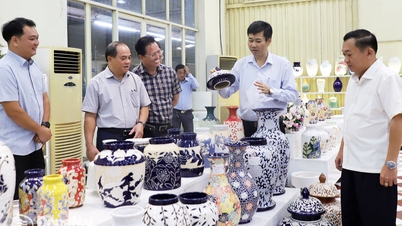









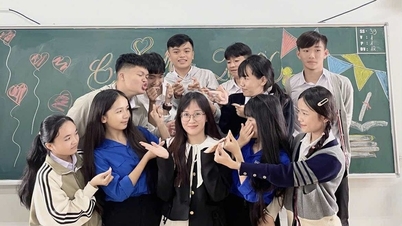

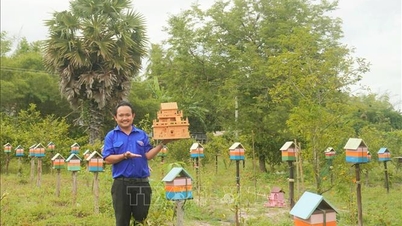




















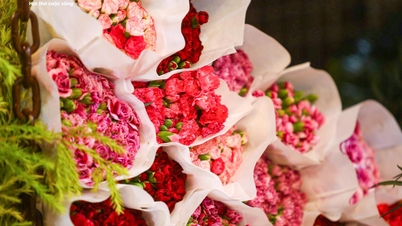
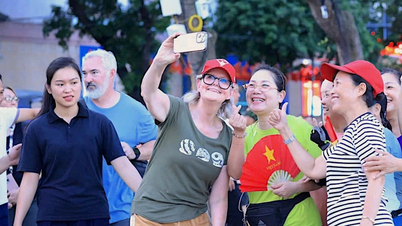

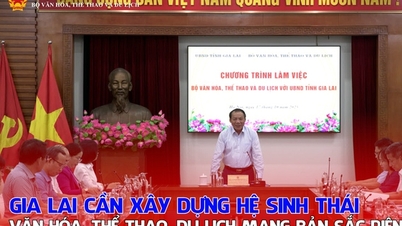

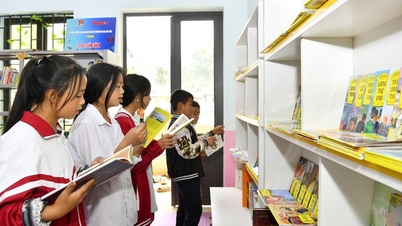




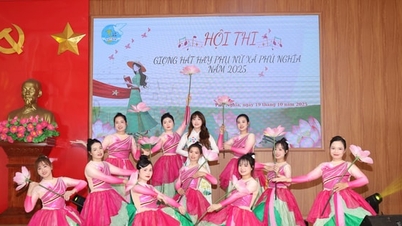

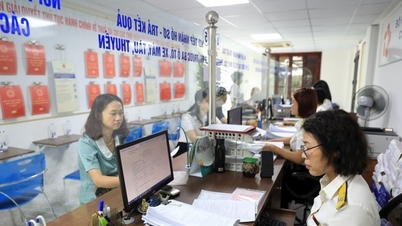

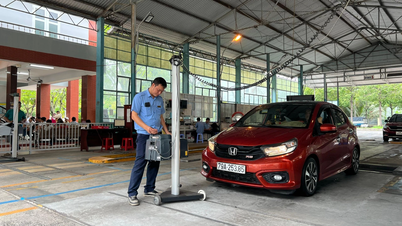

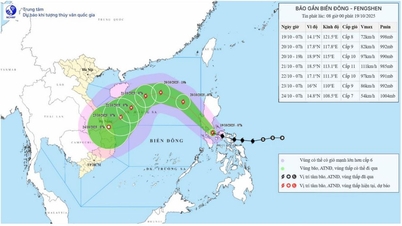
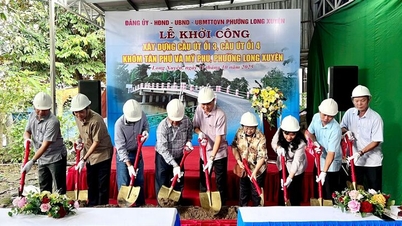












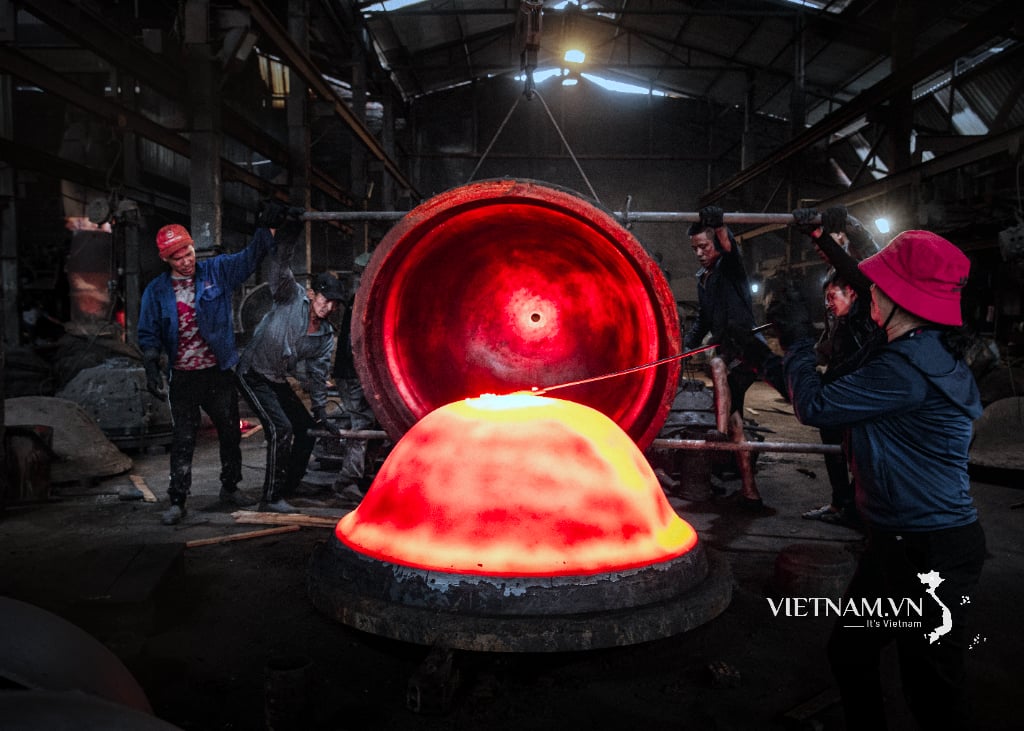


Comment (0)